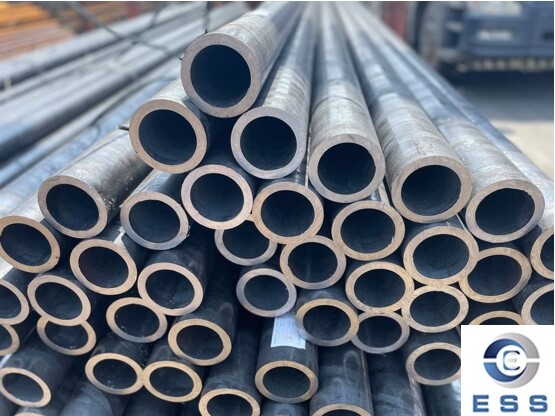ASTM carbon
steel pipe refers to carbon steel pipe that meets ASTM international
standards. ASTM international standards are a series of standards developed by
the American ASTM International Organization for Standardization, covering
detailed provisions on the chemical composition, mechanical properties, heat
treatment process and testing methods of materials such as carbon steel and
alloy steel. These standards provide an important basis for the production,
processing and quality control of carbon steel pipes, ensuring the stable
quality and reliable performance of carbon steel pipes.

Types of ASTM carbon steel pipes
ASTM A106: This is a carbon steel pipe used for conveying fluids and
low-pressure applications. The main components include carbon, silicon,
manganese, phosphorus and sulfur.
ASTM A53: This is
a carbon steel pipe used for conveying fluids and low-pressure applications.
The chemical composition is similar to ASTM A106, but it is generally used for
a wider range of purposes.
ASTM A333: This is
a carbon steel pipe for low-temperature service, suitable for piping systems
working at low temperatures.
ASTM A530: This is a carbon steel pipe used for pressure vessels and boilers,
with higher mechanical property requirements.
ASTM carbon steel pipe standards and
test methods
The ASTM standard not only specifies the
chemical composition and mechanical properties of carbon steel pipes, but also
makes detailed provisions for their heat treatment processes and test methods.
Heat treatment processes such as annealing, normalizing, quenching, tempering,
etc. play an important role in improving the strength, hardness and wear
resistance of carbon steel pipes. The test methods include chemical composition
analysis, mechanical property testing, microstructure inspection, hardness testing
and impact testing, etc. These test methods ensure the quality of carbon steel
pipes.
Material characteristics of ASTM carbon
steel pipes
The main components of ASTM carbon steel
pipes are carbon and iron, and a small amount of alloying elements (such as
manganese, silicon, etc.) are added to improve their mechanical properties and
corrosion resistance. According to the different carbon content, carbon steel
pipes can be divided into low carbon steel, medium carbon steel and high carbon
steel, and each type is suitable for different working conditions. Low carbon
steel pipes have good weldability and toughness and are often used for low-pressure
fluid transportation; medium carbon steel pipes are often used to manufacture
mechanical parts due to their high strength and hardness; high carbon steel
pipes are mostly used in tool manufacturing and other fields.
Chemical composition and mechanical
properties of ASTM carbon steel pipes
The chemical composition and mechanical
properties of ASTM carbon steel pipes are strictly regulated. For example, the
carbon content is between 0.12% and 2.0%, and the content of elements such as
manganese, silicon, phosphorus, and sulfur are also specifically limited. In
addition, the ASTM standard also specifies mechanical performance indicators
such as tensile strength, yield strength, elongation, and impact energy, which
directly affect the safety and reliability of carbon steel pipes during use.
Application fields of ASTM carbon steel
pipes
Due to their excellent performance, ASTM
carbon steel pipes are widely used in many key fields such as petroleum,
chemical industry, natural gas transportation, boiler manufacturing, mechanical
structure, and marine engineering. These fields have high requirements for the
safety and durability of materials, and the standards and quality assurance of
ASTM carbon steel pipes enable them to perform well in these fields.
Summary
In summary, ASTM carbon steel pipes play an
important role in industrial production and infrastructure construction due to
their strict standards and excellent performance, ensuring the safety and
durability of engineering projects.













 Eastern Steel Manufacturing Co.,Ltd not only improve product production and sales services, but also provide additional value-added services. As long as you need, we can complete your specific needs together.
Eastern Steel Manufacturing Co.,Ltd not only improve product production and sales services, but also provide additional value-added services. As long as you need, we can complete your specific needs together.










